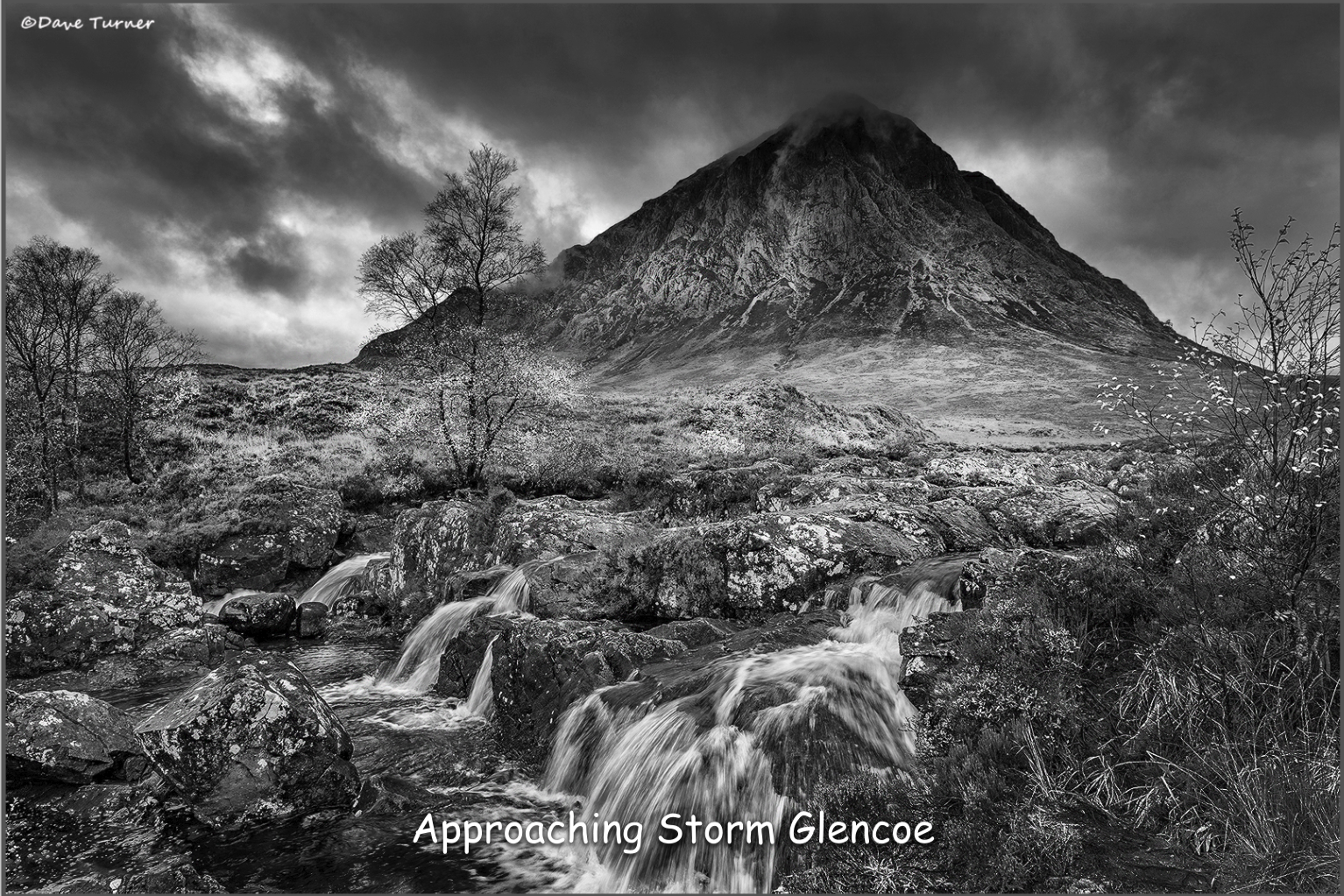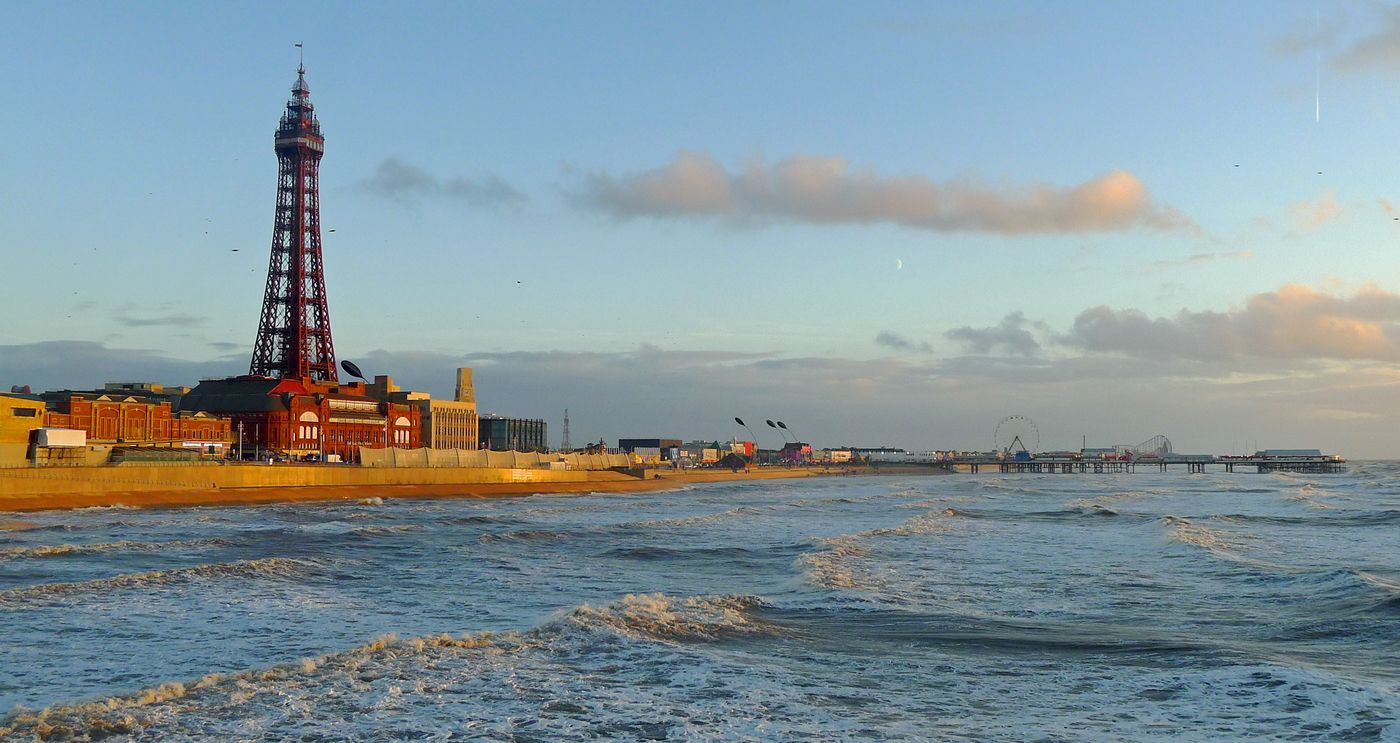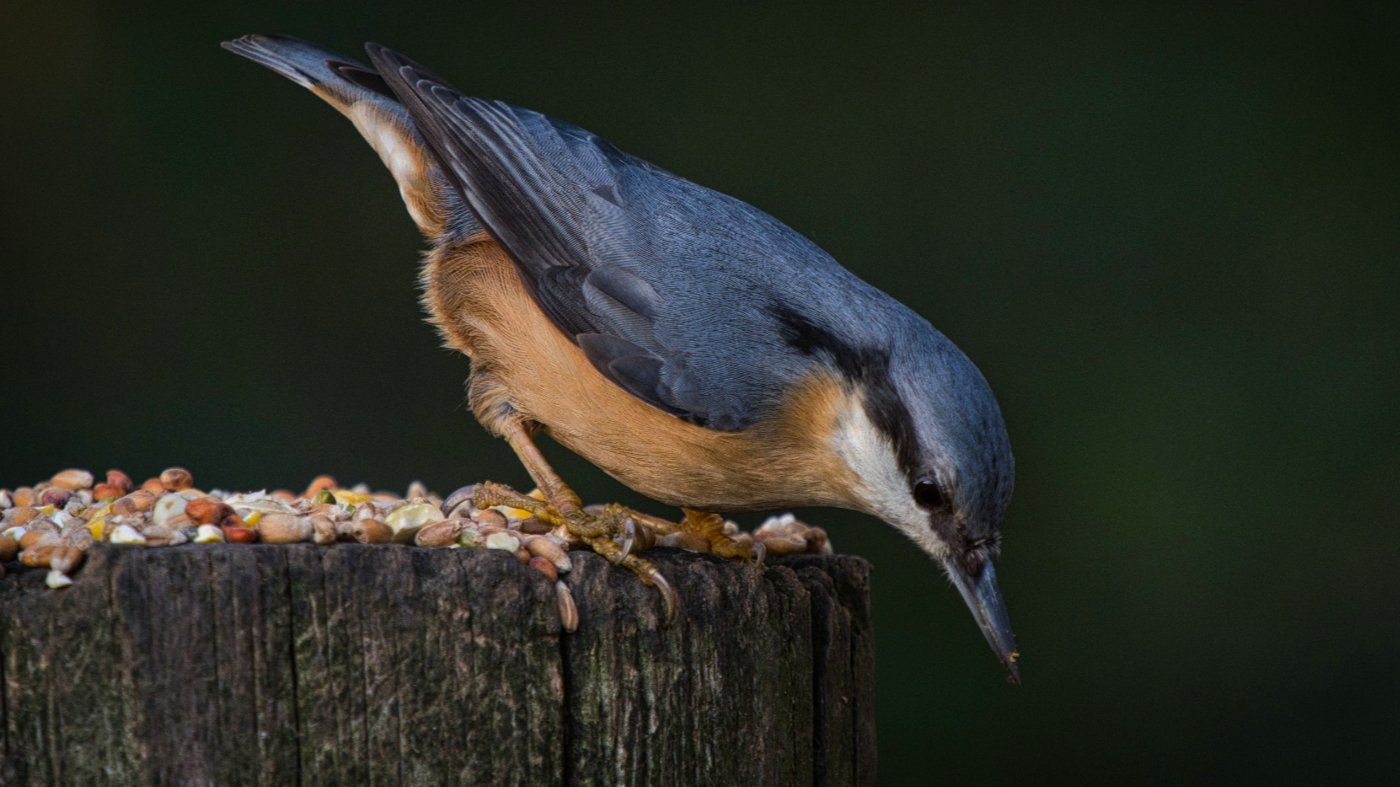The Keys to Sharper Images
Derek Smith • 23 January 2021
Like every other photographer in this lockdown pandemic world that we currently inhabit, we long to be travelling, and taking photographs. Deeply saddened by the high Coronavirus mortality rate, and infections, it’s sometimes hard to be motivated to take photos, especially in this lockdown situation, where photo opportunities are limited.
Nonetheless, I believe that it’s important to be out as much as possible, with our cameras, making the most of whatever opportunities arise. The snowdrops are out now, and sunrise, sunset photos make great subjects, you only have to see the weather watchers photos on the television weather forecasts.
So, how do we improve the photos that we do take? Composition skills are certainly one avenue to explore, but today I want to discuss the topic of sharpness in our images. The key elements to sharp images are focus, depth of field, and shutter speed.
Focus
The first point to remember is that cameras are very clever, but not mind readers, the auto focus on the camera needs to be guided to the correct focus point. For portraits, and animal photography use the smallest focus point and focus on the eyes, S-AF will be the best camera setting for posed photos, you may need to switch the focus mode to C-AF, or AI Servo for moving subjects, and possibly with a slightly larger focus point, or even a small group of focus points. For landscape photography the focus point is determined by the hyper focal point. However, the easier method is to focus a third of the way into the scene, because camera focus is sharp at the focus point, a third of the way in front, and two thirds of the way behind the focus thus ensuring a sharp foreground, and background. For macro photography the rule here is not to get too close to the subject, as the depth of field reduces as you get closer to a subject, so stay back, and crop into the image during post processing. When using manual focus, use whatever aids your camera has; focus peaking, or magnification to ensure the subject is in focus.
Depth of Field
Controlling the depth of field in an image is relatively easy if using the aperture priority mode on the camera. Portraits with a shallow depth of field and blurred background can be obtained by opening the aperture to f/2 to f/4 in natural light. For wildlife f/5.6 to f/6.3, landscape photography will require stopping the aperture down to f/7.1 to f/14. These aperture settings are dependent upon the available light, the lens, and camera used. Be aware that a lens opened wide open may not be sharp in the corners of the frame, and exhibit darker corners, called vignetting. Conversely, a lens stopped down f/16 to f/22 might give softer images owing to an effect known as diffraction, where not all the light rays are directed onto the sensor. Lenses will often be sharpest at a particular aperture setting usually around the range f/4 to f/8 this is known as the “sweet” spot of the lens.
Shutter Speed
A rough guide to the best shutter speed for handheld photography is to match the shutter speed to the focal length of the lens, with a 50mm lens 1/50, 300mm lens a faster speed of 1/300. Now, starting off the camera settings in Aperture Priority mode and fixing one of the exposure triangle parameters leaves the photographer with only the ISO adjustment to obtain the correct shutter speed, and exposure. Most modern cameras will happily shoot up to ISO 1600 without any noise issues. The type of scene that will need care with shutter speed will be: wildlife, sports, and children, moving water, and windy conditions causing moving flowers, grasses, and leaves.
Looking at this tree reflection image, taken a few days ago, I have set the aperture to f/7.1 (ideal for micro four thirds camera landscape photography) ISO200, shutter speed 1/100, with these settings the hyper focal length is 2.71m ensuring sharpness from front to back. The lens used was my walk around favourite the Olympus M.Zuiko 17mm f/1.8 (35mm full frame equivalent), on the Olympus PEN E-PL7.
For the nuthatch image it was a very different scenario, using the Olympus OM-D E-M5 lll, and the M.Zuiko 40-150mm f/2.8, with the x2 convertor. Setting the aperture to f/6.3, and ISO1000, the resultant shutter speed of 1/250 was sufficient to capture the bird at a full frame equivalent focal length of 600mm. The 5 axis image stabilisation of the Olympus camera really does pay dividends for handheld wildlife photography.
Stay safe, and enjoy your hobby.
Nonetheless, I believe that it’s important to be out as much as possible, with our cameras, making the most of whatever opportunities arise. The snowdrops are out now, and sunrise, sunset photos make great subjects, you only have to see the weather watchers photos on the television weather forecasts.
So, how do we improve the photos that we do take? Composition skills are certainly one avenue to explore, but today I want to discuss the topic of sharpness in our images. The key elements to sharp images are focus, depth of field, and shutter speed.
Focus
The first point to remember is that cameras are very clever, but not mind readers, the auto focus on the camera needs to be guided to the correct focus point. For portraits, and animal photography use the smallest focus point and focus on the eyes, S-AF will be the best camera setting for posed photos, you may need to switch the focus mode to C-AF, or AI Servo for moving subjects, and possibly with a slightly larger focus point, or even a small group of focus points. For landscape photography the focus point is determined by the hyper focal point. However, the easier method is to focus a third of the way into the scene, because camera focus is sharp at the focus point, a third of the way in front, and two thirds of the way behind the focus thus ensuring a sharp foreground, and background. For macro photography the rule here is not to get too close to the subject, as the depth of field reduces as you get closer to a subject, so stay back, and crop into the image during post processing. When using manual focus, use whatever aids your camera has; focus peaking, or magnification to ensure the subject is in focus.
Depth of Field
Controlling the depth of field in an image is relatively easy if using the aperture priority mode on the camera. Portraits with a shallow depth of field and blurred background can be obtained by opening the aperture to f/2 to f/4 in natural light. For wildlife f/5.6 to f/6.3, landscape photography will require stopping the aperture down to f/7.1 to f/14. These aperture settings are dependent upon the available light, the lens, and camera used. Be aware that a lens opened wide open may not be sharp in the corners of the frame, and exhibit darker corners, called vignetting. Conversely, a lens stopped down f/16 to f/22 might give softer images owing to an effect known as diffraction, where not all the light rays are directed onto the sensor. Lenses will often be sharpest at a particular aperture setting usually around the range f/4 to f/8 this is known as the “sweet” spot of the lens.
Shutter Speed
A rough guide to the best shutter speed for handheld photography is to match the shutter speed to the focal length of the lens, with a 50mm lens 1/50, 300mm lens a faster speed of 1/300. Now, starting off the camera settings in Aperture Priority mode and fixing one of the exposure triangle parameters leaves the photographer with only the ISO adjustment to obtain the correct shutter speed, and exposure. Most modern cameras will happily shoot up to ISO 1600 without any noise issues. The type of scene that will need care with shutter speed will be: wildlife, sports, and children, moving water, and windy conditions causing moving flowers, grasses, and leaves.
Many dedicated sports photographers will choose to shoot in Shutter Priority mode, or even Manual exposure mode, but for the vast majority of photographers Aperture Priority mode makes camera settings easier to understand.
Looking at this tree reflection image, taken a few days ago, I have set the aperture to f/7.1 (ideal for micro four thirds camera landscape photography) ISO200, shutter speed 1/100, with these settings the hyper focal length is 2.71m ensuring sharpness from front to back. The lens used was my walk around favourite the Olympus M.Zuiko 17mm f/1.8 (35mm full frame equivalent), on the Olympus PEN E-PL7.
For the nuthatch image it was a very different scenario, using the Olympus OM-D E-M5 lll, and the M.Zuiko 40-150mm f/2.8, with the x2 convertor. Setting the aperture to f/6.3, and ISO1000, the resultant shutter speed of 1/250 was sufficient to capture the bird at a full frame equivalent focal length of 600mm. The 5 axis image stabilisation of the Olympus camera really does pay dividends for handheld wildlife photography.
Stay safe, and enjoy your hobby.
Louth Photographic Society

The buffet and quiz evening was one of the highlights of our calendar, it's the culmination of the year's events before the Society takes a Christmas break. The buffet was excellently prepared by Jane, who is Graham's partner, with plenty of delicious food, pork pies, sandwiches, plum bread, with cheese, quiche, mince pies, and cake. Tony Gaskins produced an esoteric quiz, and Robin and Heather scored the most points with 48 points, I scored a miserable 17 points, but we all had a lot of fun with the answers. The raffle raised £47, with some members collecting more prizes than others, amid lots of laughter and banter. Overall it was an excellent evening, enjoyed by all. A big thank you to Jane for the buffet, Tony for the quiz, and Harry for organising the raffle. Wishing all our members, and readers a merry Christmas.

Good Morning, All We did go to the sand racing again last week, the weather was a bit overcast but as no sky is required for this kind of photography, so good action shots are still possible. Last week at the club we held our monthly competition, of prints, with the categories of "People" and "Open". There was a very good entry with some excellent prints. David Whitehouse came first in the People section with Dave Turner winning the Open section. All the results are on our website under competitions with a blog on the evening as well. This week our Christmas buffet and quiz night will be held. The buffet will be provided for you but feel free to bring a drink along with you (a beer or glass of wine if you wish). Dave Mann will also be providing tea and coffee. Tony is doing a quiz for us all so bring a pen and paper if you remember, Christmas jumpers are optional. Harry will be selling raffle tickets, and if you would like to provide a prize please bring it along and give it to Harry. Regards Graham

A print competition was held last night with the categories of “People”, and “Open”. The judge for the evening was Dane Butler, this was his second time judging with us, and he is showing much more confidence in judging at photographic clubs. In the “People” category there was a wide variety of inventive images of people, from solo portrait style, to street, and groups of people, the highest placed print in this category was the “Pride Celebration (Cologne)” taken by David Whitehouse. In the “Open” category Dane had to judge wildlife, portraits, landscape, macro, and architectural prints, I thought he did a superb job, his choice for the top spot was “Cloud Inversion Summit of Snowdon” by Dave Turner. The website Competition page has been updated with the images, and results.

Good Morning All Last week at the club we viewed the Lincolnshire photographic Associations mono group presentation, Dave Turner who goes to the group talked us through the evening with Chris Birchmore and Richard Hildred talking about their photographs. There is a blog on the evening on our website, but inspired by the evening I thought I had better try a few mono photographs myself. This week, Wednesday 10th December, we will hold our monthly print competition, with the categories of "People" and "Open", to be judged by Dane Butler from Dunholme. There are good number of entries so should be a very good competition. The following week, Wednesday 17th December, is our buffet and quiz night, for new members the buffet will be supplied and anyone who would like to donate a raffle prize please give it to Harry. The evening is for members only. Regards Graham

Last night members were treated to a showing of the LPA (Lincolnshire Photographic Association) Mono Group presentation. Three of our members, Dave Turner, Richard Hildred, and Chris Birchmore are members of the LPA Mono Group. Dave Turner excellently presented this showcase of the Mono Groups work, many of the images presented were stunning, and inspirational. A simple photo of a padlock on a gate took on a different dimension when presented in monochrome, and landscape photography becomes dramatic in monochrome, especially with a moody sky. It was a very interesting, and well attended evening. Thank you to Dave Turner for presenting, and Dave Mann for the refreshments.

Good Morning All Last week at the club we held a committee meeting, with all committee members in attendance. Harry will once again run the Christmas raffle on our buffet and quiz night, if any member wants to donate a prize, Harry can now accept them, obviously if it's a perishable prize then bringing it in on the night would be better. We are holding a 70th anniversary exhibition next year at the Louth Museum, if any member has local prints that they think may be suitable to put in the exhibition you can bring them to the club any time now. Derek has done a blog on the night with more information. This week, Wednesday 3rd December, we are viewing the LPA mono groups presentation, Dave Turner is a member of the group and will talk us through what the group do and if time allows show us some of his own mono prints. Don't forget to bring your prints along this week for the print competition, with the categories "People" and "Open", to be held the following week, email your titles to Dave Turner in advance please. Regards Graham

We held a Committee meeting last night in place of a regular meeting. The Committee meets twice a year to discuss items pertinent to effective, and smooth running of our Society. The Society celebrates 70 years of continuous operation next year, and we intend to show an exhibition of photographs taken over those years at the Louth Museum. The LPA Battles print competition will be held next year, and consists of 3 rounds held at photographic clubs throughout Lincolnshire, with a final round held at Nettleham. Louth has been drawn to meet with camera clubs in Grantham, and Axholme, and as you can understand this will entail a far amount of travelling. There is a proposal to the LPA which is currently under consideration which would reduce each club entry to 10 prints and for the whole competition to be held at Nettleham in 2027. Our current annual project is “Prime Time”, that is one photo for each month of the year taken with a fixed focal length lens, a prime lens, my choice for this year has been a 45mm lens, which is a full frame 90mm lens. Members show their annual project photos in the January of the following year. The Committee has decided on the project theme for next year as “Water”, which should give members a chance to demonstrate some creativity, as can be seen from the attached image. Our Christmas social event will be held on the 17th December, a buffet will be provided, there will be a quiz, and a raffle, the door entry charge will be £3 for the evening.

Good Morning All Last week at the club we held our PDI of the year, it was a well-attended event and thanks to Harry's organisation skills it all ran very well. Congratulations go to all the subject winners: Pictorial, Harry Kerman, Record, Dave Evans, Portrait, Derek Smith, Photojournalism, David Evans, Landscape, Dave Turner and Natural History, Graham Harrison. The overall winner was Harry Kerman. Well done Harry a great photograph of a White Cosmos. All the top three in each subject are on our website Competition page. Don't forget if you are entering the December print competition, with the categories of "People" and "Open" send your titles to Dave Turner please. The prints need bringing in a week on Wednesday. This week, Wednesday 26th November, we are holding a committee meeting, committee members only for this one please. For newer members we hold two committee meetings a year to organise events and the smooth running of the club. Regards Graham

Last night we held our PDIOTY (PDI of the Year) competition, our judge for the evening was Jorg Malinowski. These annual competitions are an opportunity for members to showcase their best images from the year, some of course from the monthly competitions, as such the competition entries were of an extremely high standard. Jorg performed an excellent job of judging the entries, and the results are all on the website Competition page. Congratulations to Harry Kerman for gaining the title of PDI of the Year with his White Cosmos image.

Good Morning All While we were away the other week we did have a walk around Blackpool. I only took my compact camera which I bought in 2011 but it still works ok and takes decent photographs. It is a Panasonic LX5 which fits in a pocket and is useful now and again. Last week we had mini lectures; photographs we had taken on this year's outings. Four members took part with Richard Hildred filling in with wedding photography from forty odd years ago, a very interesting look at how Richard went about photographing weddings, very different from today with far less photographs been taken. The outings did show we managed to photograph insects and birds on our walks around Red Hill and Rimac. I finished the evening with photographs taken in Somerset and Devon in 2020. This week, Wednesday 19th November, we hold our PDIOTY (PDI of the year) to be judged by Jorj Malinowski of Lincoln. It will be an evening of our best photography and we have just over fifty entries. The NEMPF exhibition acceptances have now been decided, well done to Dave Turner who had two accepted and I managed one acceptance myself. The standard for acceptance is very high, we had four members enter twenty nine PDI'S all together and only three acceptances . We had a lot of near misses, the score required was twelve and we had twelve elevens between us. You will see the exhibition at our club next year. Regards Graham


